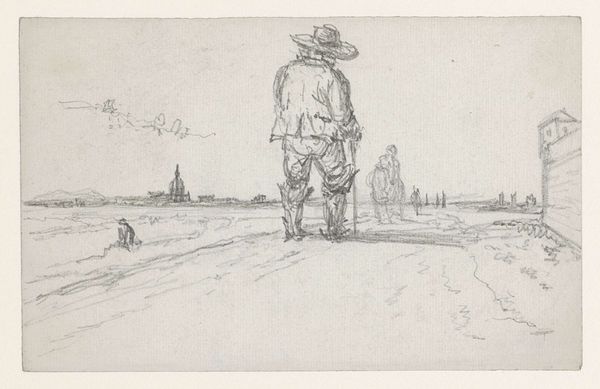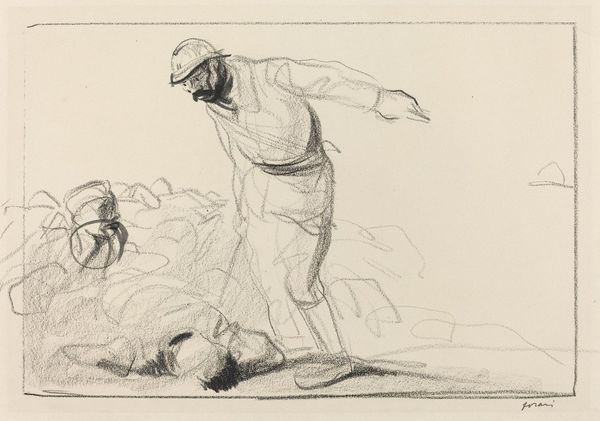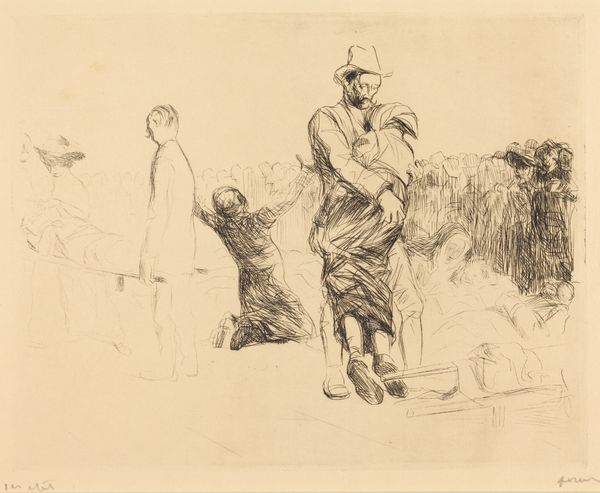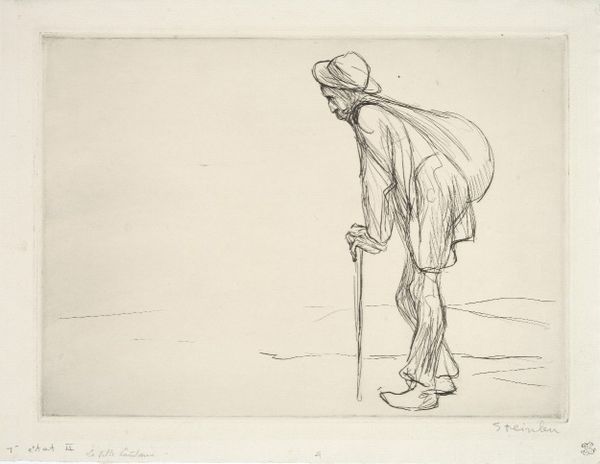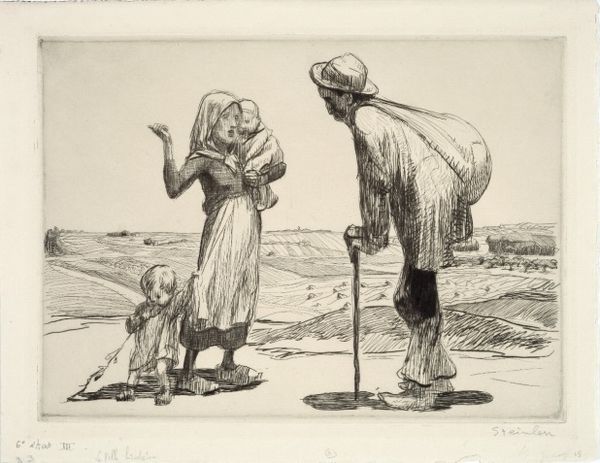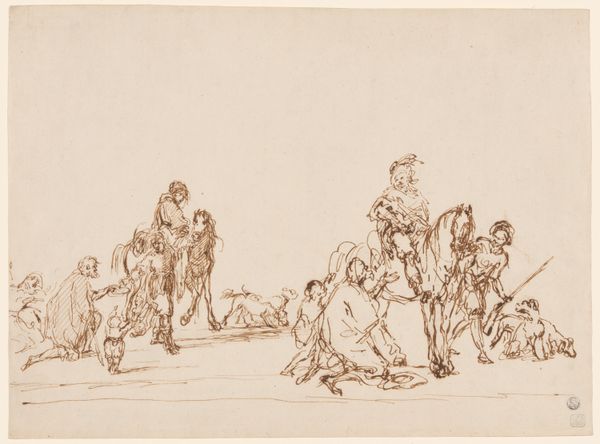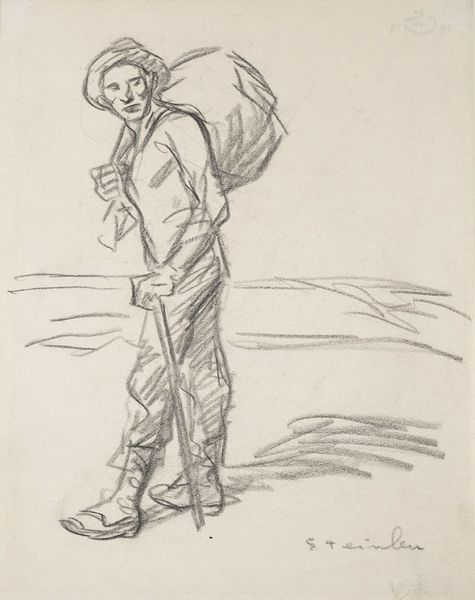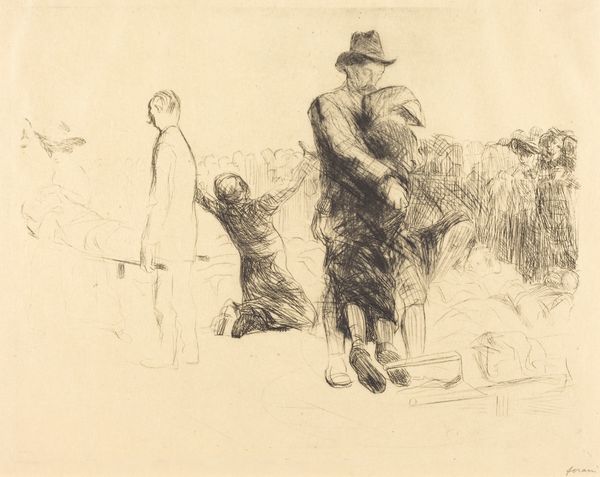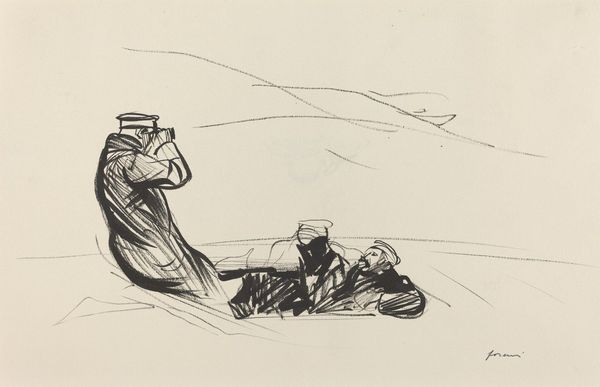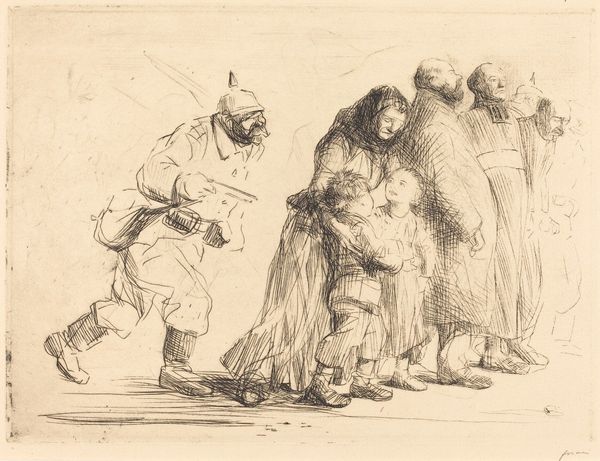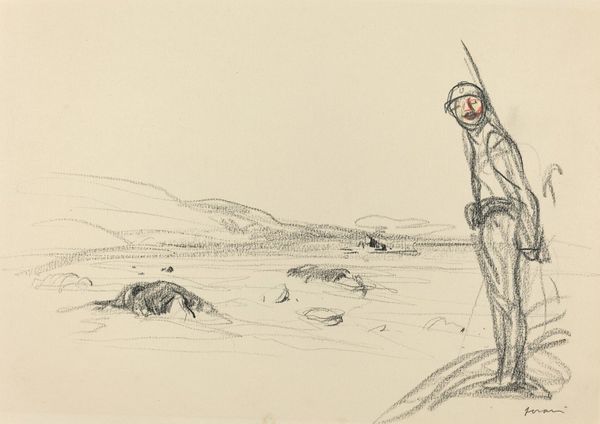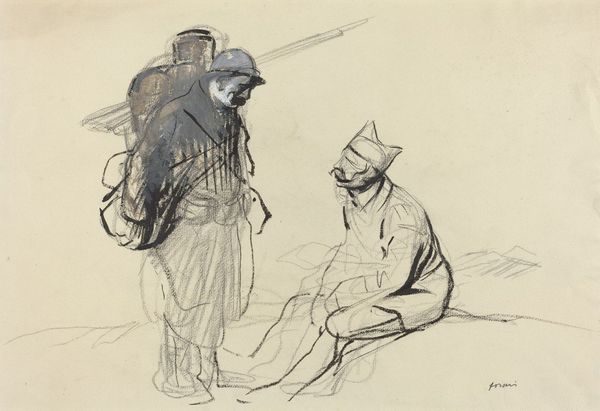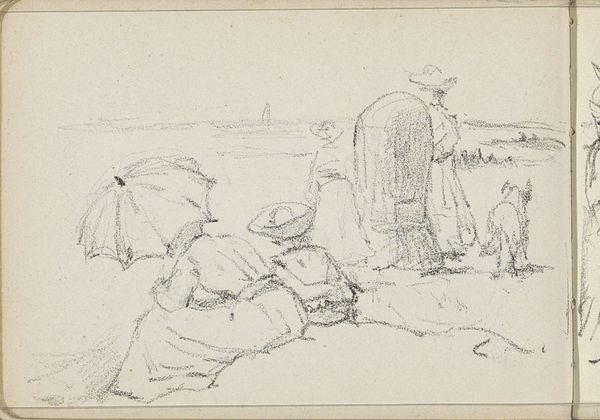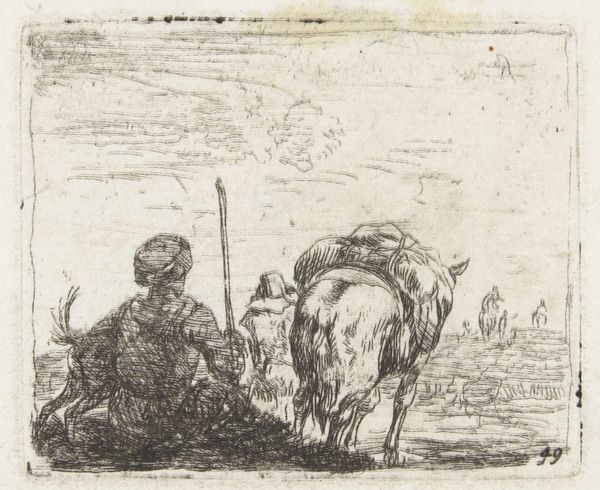
drawing, pen
#
drawing
#
narrative-art
#
figuration
#
pen-ink sketch
#
pen
Copyright: Public Domain: Artvee
Curator: Jean-Louis Forain’s “German Advance II”, created circa 1914-1919, presents a stark depiction of war through a pen and ink drawing. Editor: It strikes me immediately as desolate; the landscape feels empty, mirroring the apparent hopelessness of the figures in the distance. The frenzied scrabble for safety against the backdrop of near-blankness. Curator: The rapid pen strokes emphasize the urgency of the scene. Look at the detail given to the pointing soldier versus the minimal rendering of the figures fleeing. It creates a powerful contrast highlighting the authority and perhaps, even complicity of the officer directing the chaos. Editor: Exactly. That gesture of pointing, the officer directing "over there," that implicates not only his action in the war machine but evokes wider, deeper contexts. Who gives such orders? Where is 'there'? It raises questions of agency and sacrifice within the deeply patriarchal structure of militarization and war. Curator: Absolutely, and considering Forain's role as a war artist embedded with the French army, his access to materials and the very act of documenting—how the immediacy of the pen allows him to record what is in front of him and make it accessible, disseminating these representations further, in ways a monumental sculpture could not. Editor: This process is important, yes. But the consumption of these images then shapes perceptions; wartime propaganda became ubiquitous, bolstering narratives of nationalism and justified sacrifice. Are these drawings an endorsement or an observation? Do the circumstances change if the artist profits materially and socially from it? Curator: The deliberate composition, with the prominent soldier and the sparse but potent rendering of those fleeing, invites critical thought on how stories are constructed. It is not merely observation; it's a calculated visual argument, whatever it might be. Editor: Precisely, examining such art lets us investigate the historical intersection of war, national identity, and how trauma becomes both visualized and processed collectively. The stark simplicity underscores war’s brutal calculus: some direct, while others suffer the consequence. Curator: "German Advance II" reminds us that art offers valuable insights into wartime manufacturing of consent through images and materials while underscoring social power at work. Editor: Indeed. And I am left pondering the role of art, how it becomes entangled with conflict, reflecting both a lived reality and powerful ideologies.
Comments
No comments
Be the first to comment and join the conversation on the ultimate creative platform.
